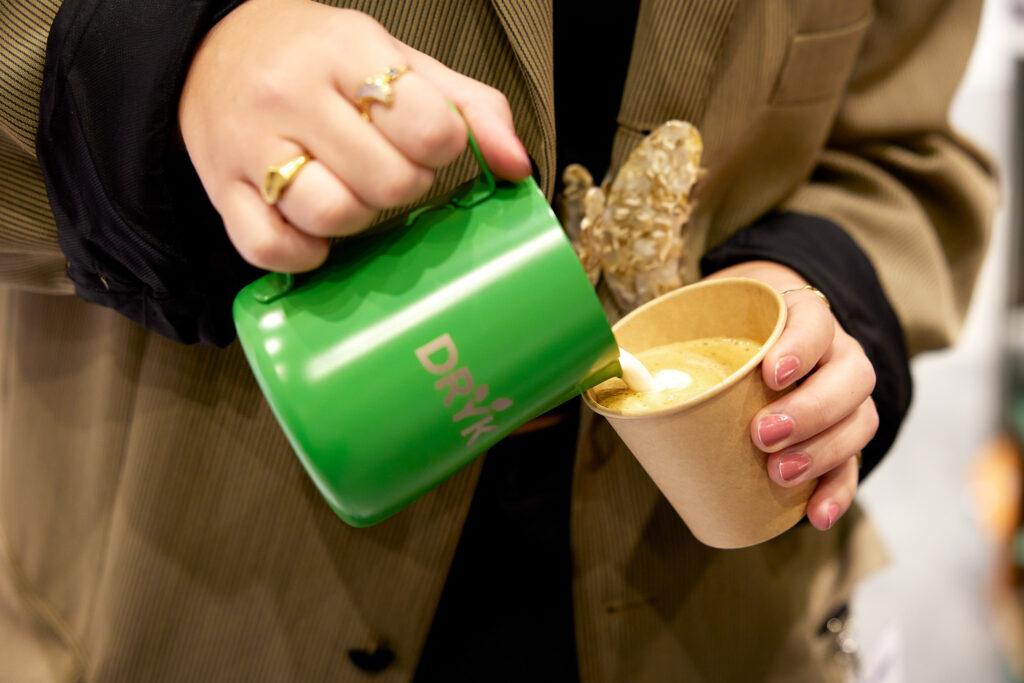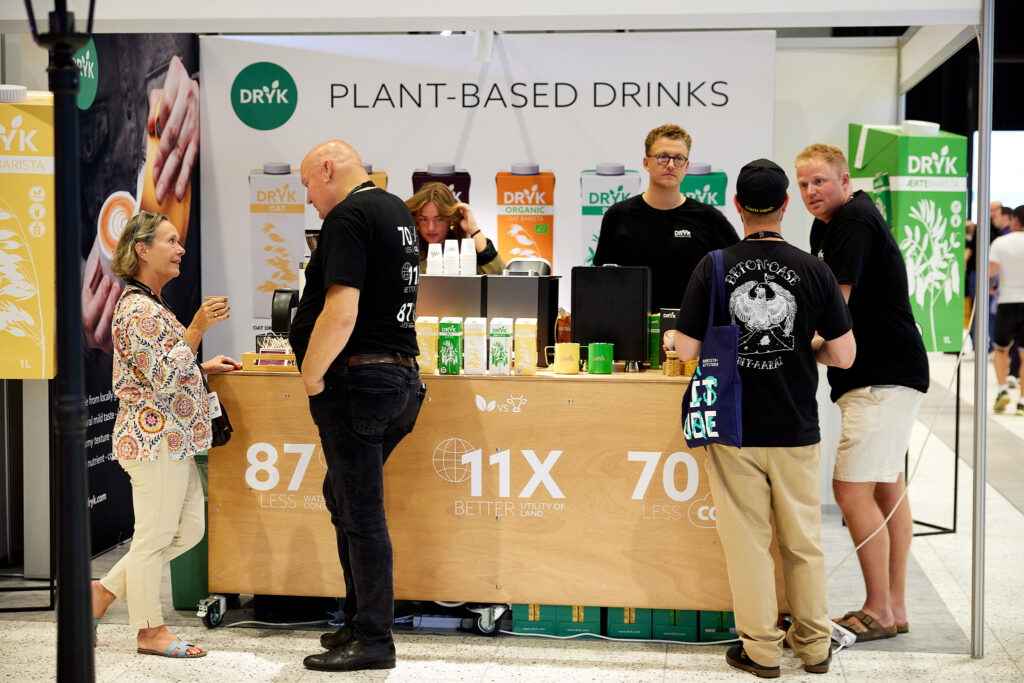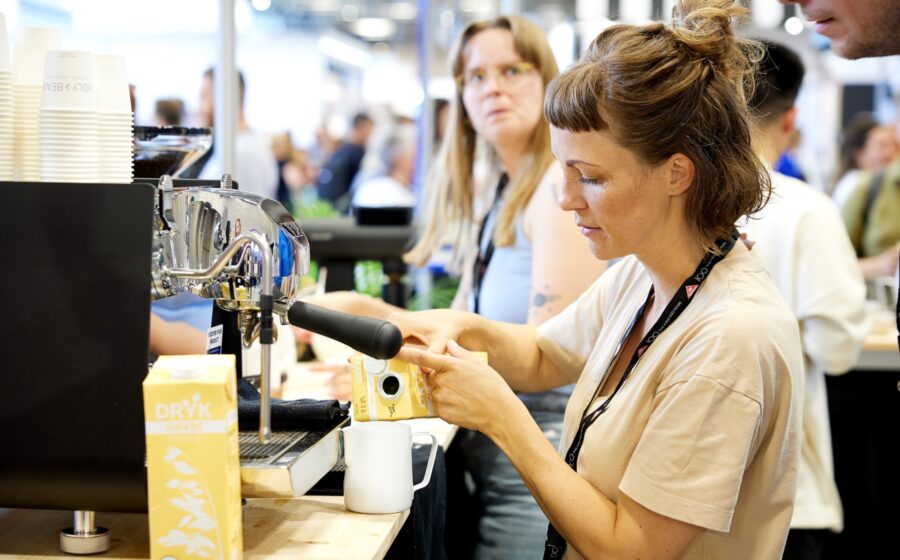Being diagnosed with celiac disease has complicated my relationship with coffee shops. This autoimmune condition causes a reaction to even small amounts of gluten, a protein found in wheat, barley, and rye—and many common coffee shop items.
If the shop isn’t too busy, I’ll explain my needs to the barista and propose a reasonable accommodation to prevent allergen cross-contact. For example, I might ask if a drink can be built wholly in a to-go cup versus pulling shots into cups and barware that might contain trace amounts of gluten or other allergens.
The baristas I’ve chatted with almost always respond positively, and I’ll psyche myself up for the experience—only to receive a drink that is served with a complimentary biscuit on the side. This is a great touch for any other patron, but for me, it reveals the potential for misunderstanding in allergen-handling—and raises concerns that I might suffer a reaction later, which can mean weeks of discomfort.
Although black coffee is—mercifully—almost always allergen-free, visiting cafes still entails a negotiation of risk for people like me, who have a food allergy or intolerance. (Celiac isn’t a food allergy, but requires similar vigilance against cross-contact.) While some cafes have protocols that allow them to serve allergic patrons safely, industry trends like the rise of plant-based milks (especially oat milk) and the demand for certain syrup flavors easily complicate matters.
Today, however, innovative brands are increasingly catering to the food allergy community, and cafes working with allergy-friendly products are shedding the limitations that allergens created for many. The result is new opportunities to draw in business—and, more importantly, open up menu options for patrons who might otherwise feel excluded.
What’s An Allergy-Inclusive Cafe To Do?
Clear communication has always been at the center of my positive cafe experiences, especially when staff are trained to answer questions about allergens or are willing to wash steaming jugs to avoid lingering contaminants.

And it’s likely that cafe staff will only field more questions about allergen-handling protocols as time goes on. An estimated 1% of the global population has celiac disease, and about 33 million people in the U.S. (10% of the population) and 17 million EU residents (3.8% of the population) have at least one food allergy. Most are accounted for by the “top nine” allergens: milk, eggs, fish, shellfish, tree nuts, peanuts, wheat, soybeans, and sesame. While U.S. federal law requires food businesses to declare allergens on packaged foods, this is voluntary for food businesses that serve freshly prepared or unpackaged foods. In the European Union and the U.K., food businesses must declare 14 major allergens on packaged and prepared foods.
Because many common allergens are found in cafe fare, some shops list them on their menus even when not required, which helps customers with food allergies understand what to avoid. This might include dairy; plant-based alternatives like soy, almond, and oat (which can trigger reactions unless specifically gluten-free); and wheat- or tree-nut-based foods. Supplier vetting can also reveal hidden allergens, like barley malt flavoring that contains gluten.
For cafes, avoiding common allergens might feel limiting, especially as seasonal and signature drinks—particularly those with multiple potential allergens, like Starbucks’ Almond Biscotti Oat Latte or Iced Hazelnut Oatmilk Shaken Espressos—become more popular. But an allergy-friendly menu can still go hand-in-hand with innovative drink development.
Take it from DRYK, a plant-based beverage company whose name comes from an old Danish word for “drink.” DRYK’s Pea Barista, an alternative milk derived from—you guessed it—peas, won the Best New Product Award in the Specialty Non-Coffee Beverage Standalone category at World of Coffee Copenhagen 2024. Peas are not among the “top nine” or even the top 14 allergens, making alternative milks derived from them one of the most allergy-friendly options. DRYK also considers those with allergies in its product information: On its website, each of the brand’s milks has a list of potential allergens and dietary considerations.
DRYK has a handful of alternative milks, but they’re all made from either peas or oats. According to CEO Christian Christensen, the company is focused on providing a few well-received oat and pea beverages rather than spreading its focus thinly over a variety of products. “We did not see that coming, but we put a lot of effort in and sometimes effort is rewarded,” he says of the win, adding that DRYK aims to be a differentiator in barista-focused product lines. “We wanted to create a product that was better suited for coffee, didn’t interfere with tasting notes, [and overall] tastes fantastic in coffee.”

While plant-based alternatives are ideal for dairy allergies, they can still worry those with soy and tree nut allergies as well as gluten and oat intolerances. For example, DRYK’s oat milk contains <100 parts per million (ppm) of gluten, considered a “low level of gluten” but still higher than the 20 ppm threshold to be legally considered “gluten-free” and suitable for celiacs. While Oatly is only gluten-free in the U.S., Alpro (a sponsor of World of Coffee Copenhagen) offers the only gluten-free oat milk I’ve seen in Europe, although not all Alpro oat milks are gluten-free.
Allergy-Friendly Flavor
Imagine a customer tells you they have an allergy to peanuts or tree nuts (which include almonds, cashews, and hazelnuts, among others). Now imagine that you’re able to offer them an allergen-free syrup with a nutty flavor they may not have experienced in years. Win-win, right?
That’s the goal of companies like Torani, a syrup and sauce producer based in the U.S. “People with food allergies are often left out when it comes to offerings from major national brands. We strive to be as inclusive as possible, creating delicious and unique flavors that can be enjoyed by those with allergies and dietary restrictions,” says Andrea Ramirez, Torani’s consumer and customer market insight manager. Ramirez says that two of her favorite syrups, Toasted Black Sesame and Sugar Free S’mores, are allergy-friendly.
“We don’t use any of the ‘big nine’ allergens as ingredients, though some natural flavors may contain protein compounds that are derived from sources containing allergens,” she says. If that happens, she says, Torani lists its ingredients in an allergen chart, which is available online. Monin, another popular beverage syrup and sauce company, also offers allergy-friendly syrups, including nut-free nut flavors.

If Torani’s experience is any indication, cafes that offer allergy-friendly options could be poised for repeat business. “We’ve received a lot of positive feedback from customers who appreciate the variety of our ‘big nine’ allergen-free options,” says Ramirez. “Many want to enjoy as many flavors as they can without sacrificing the taste and enjoyment that comes with it.”
The Sustainability Factor
Allergy-friendly suppliers and protocols can impact a cafe’s sustainability goals. While I always elected for oat milk before my celiac diagnosis, in large part because of its local availability and low carbon footprint, dairy is now safest for me. But it doesn’t come without a cost.
Christensen, who is vegan, believes the coffee industry must move away from animal products. “We’re in the middle of a climate and biodiversity crisis. Much of this is driven by animal-based farming,” he says. Indeed, dairy has a high carbon footprint, and some cafes have opted to implement a surcharge for cow milk—or stop serving it entirely. When it comes to alternative milks, crops like pulses (including peas) and oats have lower carbon emissions in comparison with dairy, soy, rice, and almond milks. They also require less water to grow and far less land use than what is needed to raise cows.
Furthermore, allergy-safe processes often require more resources, like separate prep spaces, designated steaming jugs, or additional to-go cups. Some brands are exploring sustainable packaging, but options like “edible cups” are often made with wheat, egg, and dairy ingredients. Many biodegradable to-go containers have also been found to leach allergens into food, making plastic a more allergy-safe alternative.

Even in allergy-aware cafes, slip-ups can occur. In the previous example I shared, everything went well until my coffee was served with a biscuit, which forced me to question whether the drink was safe to consume at all. That’s why cafes have to consider allergen protocols holistically. Coffee shops can stock single-serve products from businesses like Homefree, MadeGood, or Partake, which are free of the “top nine” allergens—or designate clean tools for serving eat-in allergy-friendly treats, thereby reducing packaging. Cafes can also source pastries from local allergy-friendly bakers and store them separately from those containing allergens.
Allergens Are Not the Enemy of Novelty
In an ideal world, cafes would find a sweet spot at the intersection of novelty, sustainability, and allergy inclusivity.
Christensen is sure new developments will make attaining that sweet spot increasingly more viable. For example, DRYK has experimented with plant-based milk made from buckwheat, a gluten-free grain used in Japanese soba noodles and an Eastern European porridge called kasha. Buckwheat can serve as a cover crop, a regenerative agriculture technique that helps improve soil health and crop yields on farms. Christensen believes buckwheat’s unique, nutty flavor profile and potential profitability make it an “inevitable” option in the near future.
While being allergy-inclusive goes beyond having allergy-friendly products on hand, there are some low-hanging fruits for cafes to harvest. Baristas can make alternate versions of seasonal and signature drinks by subbing in pea milk for oat or nut-free syrups for homemade versions. They can also mix drinks in to-go cups, or nix garnishes (or ask customers before serving) in case of uncertainty. I know personally that I return often—and send others—to the cafes that make me feel taken care of.
Experimentation might even be part of the fun. Just watch for the delight on the face of the next customer who comes in with an allergy and a hopeful craving when you say, “Yes, we’ve got another way to make that for you.”
















